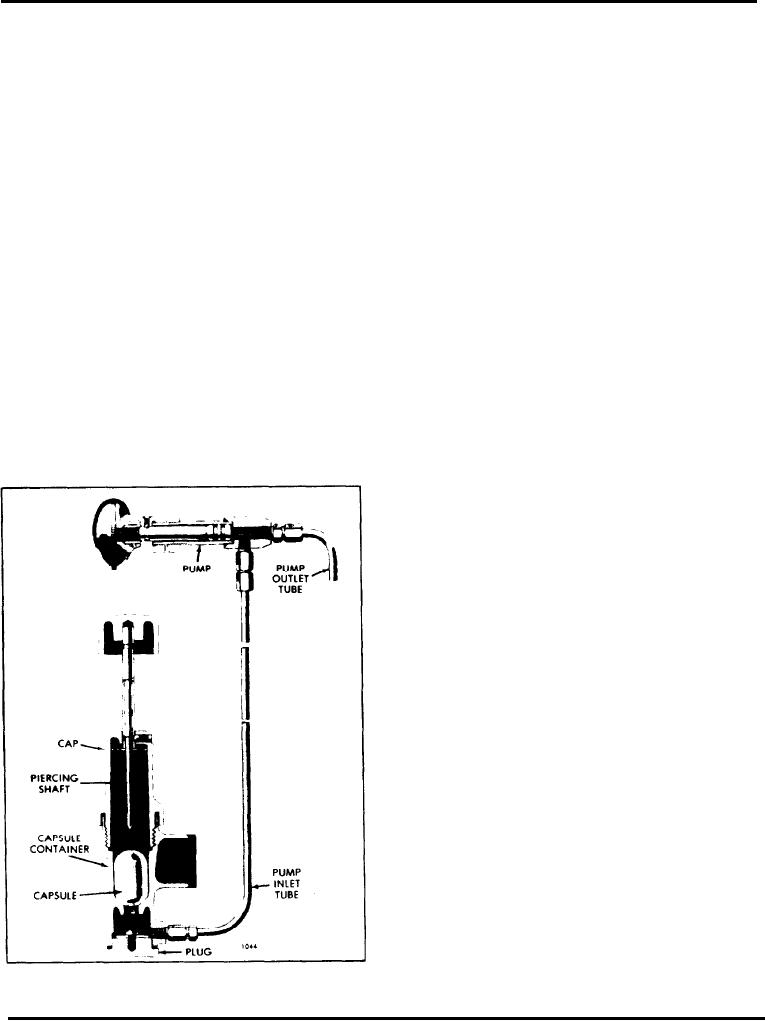
DETROIT DIESEL
Engine Equipment
CAUTION: The starting fluid is toxic and
the heat of compression to ignite the fuel-air
inflammable. Use caution when handling.
mixture.
FLUID STARTING AID
2. Pull the piercing shaft all the way out and install
and tighten the cap on the container.
The fluid starting aid (Fig. 8) is designed to inject a
3. Push the piercing shaft all the way down. This will
highly volatile fluid into the air intake system at low
rupture the capsule and fill the container with the
ambient temperatures to assist in igniting the fuel oil
starting fluid.
injected. The fluid is contained in suitable capsules to
facilitate handling.
4. Move the engine throttle to the maximum speed
The starting aid consists of a cylindrical capsule
position.
container with a screw cap, inside of which a sliding
piercing shaft operates. A tube leads from the capsule
5. Engage the starter and at the same time pull the
container to a hand operated pump and another tube
pump plunger all the way out. Push the plunger in
leads to the atomizing nozzle threaded into a tapped
slowly, forcing the starting fluid through the atomizing
hole in the air inlet housing.
nozzle into the air intake. Continue to push the pump
in until the engine starts. If the plunger is not all the
The capsule container should be mounted in a vertical
way in when the engine starts, push it in slowly until it
position and away from any heat.
locks in the IN position.
Start the engine, using the fluid starting aid, as
6. Unscrew the cap and remove the capsule. Do not
follows:
leave the empty capsule in the container.
1. Remove the threaded cap and insert a fluid capsule
7. Replace the cap on the capsule container and make
in an upright position within the container.
sure the piercing shaft is all the way down.
Service
The cold weather fluid starting aid will require very
little service. Replace the piston seal packing if the
pump leaks. If there is an excessive resistance to
pumping, the nozzle may be plugged. Remove the
nozzle and clean it.
PRESSURIZED CYLINDER STARTING AID
Start the engine during cold weather, using the "Quick
Start" starting aid system (Fig. 9) as follows:
1. Press the engine starter button.
2. Pull out the "Quick Start" knob for one or two
seconds, then release it.
3. Repeat the procedure if the engine does not start on
the first attempt.
CAUTION: Do not crank the engine more than
30 seconds at a time when using an electric
starting motor. Always allow one minute
intervals between cranking attempts to allow
Fig. 8 - Typical Fluid Starting Aid
the starting motor to cool.
Page 42

